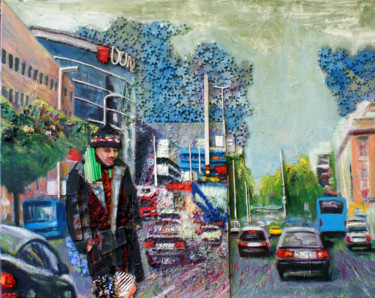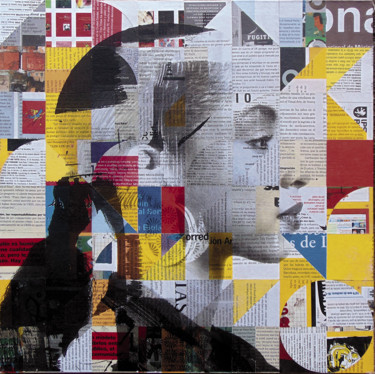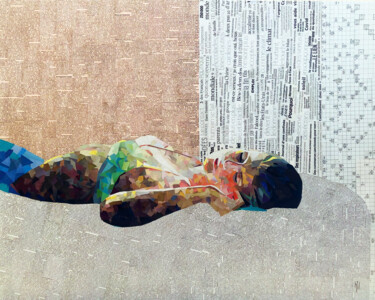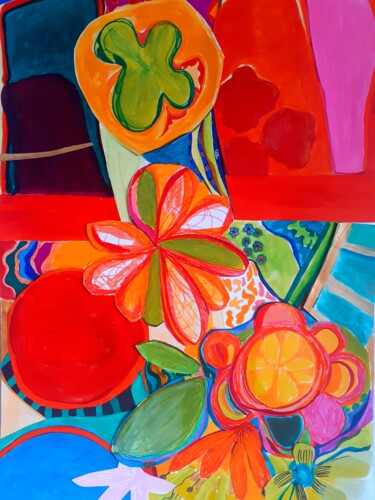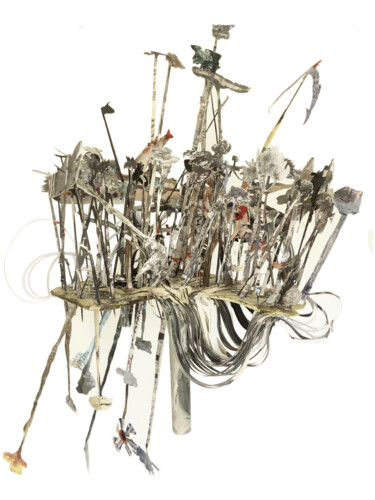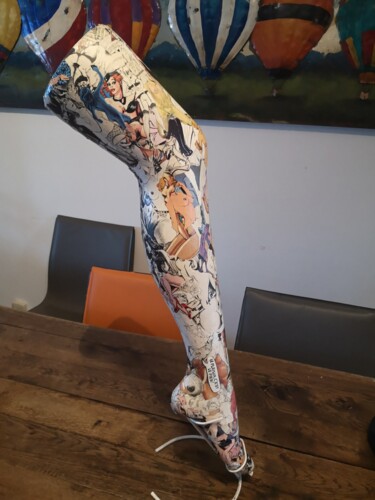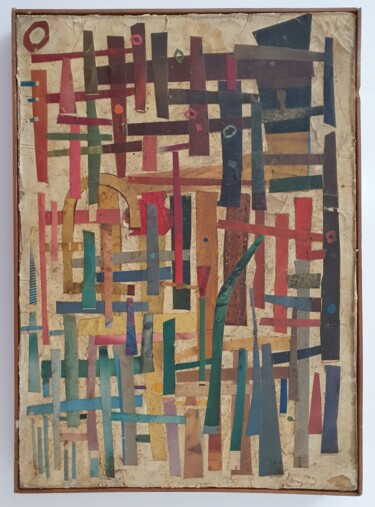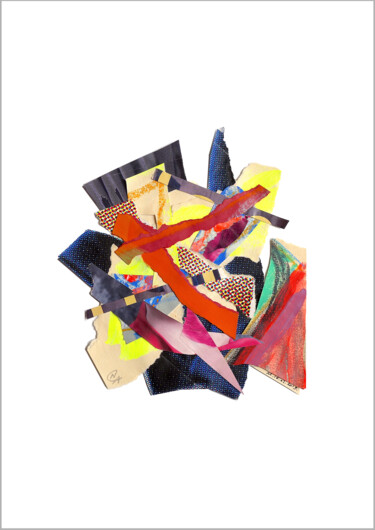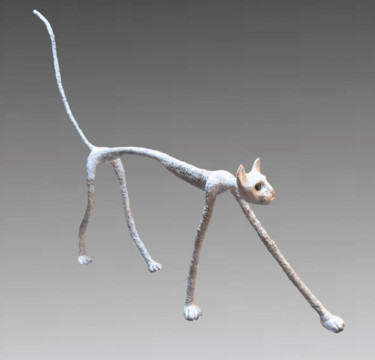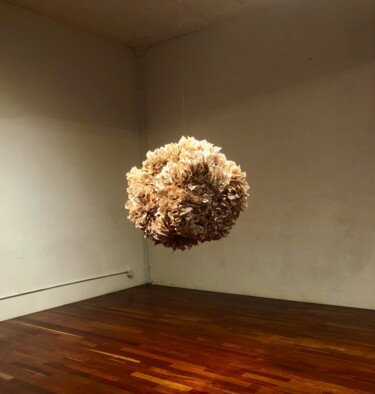Art, waste, recycled objects and poor materials
The use of waste, recycled objects and poor materials has distinguished the production of great masters and artistic currents that, more or less explicitly and provocatively, have wanted to move away from the dominant cultural movements, inextricably linked to the consumer society. This tendency spread from the early years of the twentieth century, when, in the collages of Georges Braque and Pablo Picasso, appeared, for the first time, fragments of different materials, which, reused, were combined with painting. In addition, it is worth noting that the above-mentioned Spanish master also distinguished himself for his use of the assemblage technique, which he used to combine poor materials with recycled ones. Later, like the Cubists, the Futurists, through the use of the collage technique, enriched their paintings with discarded objects.
Georges Braque, Guitar and sheet music on table, 1918. Collage, gouache, paper. Columbus: Columbus Museum of Art. @sanderpaarl
Despite these well-known precedents, however, it was Dadaism that gave a new value to waste, considering it as a true artistic element to be integrated with more noble materials. Among the most important masters of this movement, there were Marcel Duchamp and Lucio Fontana, whose work represents, to this day, an obligatory reference point for artists who want to use discarded objects.
Marcel Duchamp, Fountain, 1917. Ready-made, cm 63 x 48 x 35. Paris: Centre Pompidou. @didartico
Starting in the 1920s, with the increasing popularity of plastic, masters such as Naum Gabo and, later, Alberto Burri, experimented with the potential of this substance in the artistic field. Another material widely recovered and used was iron, as demonstrated by the sculptures composed and welded by the American artist David Smith. During the Sixties, Neo-Dadaism, which took sides against traditional conventions, brought back into vogue the use of waste, objects which, charged with an innovative sentimentality, became the symbol of continuity between present and past. Also in this period, some artists combined the use of waste with the production of artefacts of clear classical inspiration, as did Michelangelo Pistoletto, an exponent of the Italian Arte Povera movement. In fact, this artistic trend, explicitly opposed to modernism and technology, was characterized by the use of poor materials, such as earth, rocks, clothes and paper, which, often combined with clear references to mass culture, generated works rich in contrasts.
Michelangelo Pistoletto, Venus of the rags, 1967. Cement and used clothing. Biella: Pistoletto Foundation. @letilebowski
During the Eighties, on the other hand, artistic currents pursued the aim of exalting the banality of everyday life, just as happens in the refined compositions of Tony Cragg, dominated by objects made of plastic, glass and recycled wood. Besides the latter, there are many other artists who, from the late twentieth century to the present day, have produced works with discarded objects, such as the German Ha Schult and the Brazilian Vik Muniz, whose work has sought to denounce the contemporary political, social and environmental condition. In fact, it is good to highlight how, these last two artists, exponents of Trash art, have undertaken a creative "fight" against environmental pollution, transforming waste into precious objects of art.
Ha Schult, Trash People, traveling installation. @filomena_chiappini
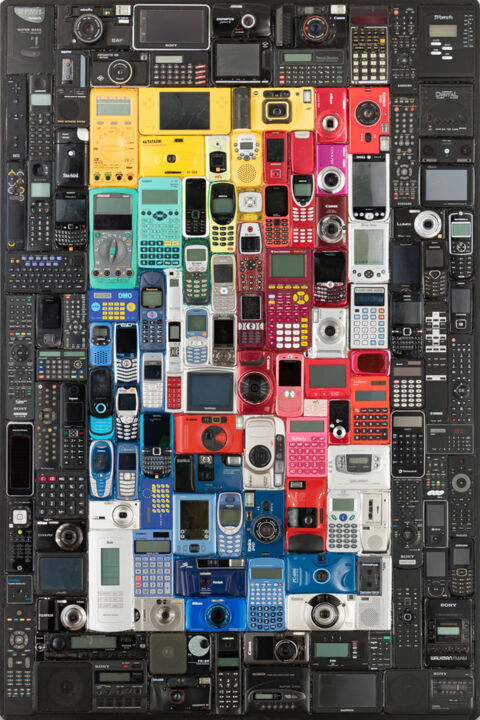 Rémy Tassou, Coolpix, 2020. Stainless steel, aluminum, metals and collage, 125 x 83 x 10 cm.
Rémy Tassou, Coolpix, 2020. Stainless steel, aluminum, metals and collage, 125 x 83 x 10 cm.
Rémy Tassou: Coolpix
Regarding the artists of Artmajeur, they too, representing various ideologies and using very different techniques, have created works containing, or having as their main subject, poor materials, recycled objects and waste. An example of this is the sculpture of Rémy Tassou, who, realized with the technique of collage, has put together, on the same support, different technological objects of daily use, among which, stand out at a glance, cell phones, remote controls, calculators and cameras. The composition of this work has been made with care, study and attention, since the artist has placed on the edges, just as if it were a frame, the objects of dark tones, while the colored ones, divided for shades, have been placed in the center of the sculpture. In this way, the above mentioned collage, innovative and contemporary, promotes, just like Trash art, the reuse of objects, which, now fallen into disuse, would increase both landfills and environmental pollution. Moreover, the subject of the work, which also seems to be a sort of celebration of technology, could allude to the importance that the latter has assumed in our contemporary lives. Referring to the art-historical tradition, Coolpix, which has transformed everyday objects into art, represents a sort of ready-made. In fact, this sculpture cannot be considered as an authentic ready-made, since the objects, manipulated by the artist through the technique of collage, have not been shown to the viewer in their original form. Another contemporary and "impure" ready-made is the Nelson automatic cooker \ deep fryer, created in 1979 by Jeff Koons, where not only a fryer is exhibited, but also the strips of fluorescent light to which it has been attached.
 Zaël, The looser skater, date unknown. Ready made and painting, 22 x 85 cm.
Zaël, The looser skater, date unknown. Ready made and painting, 22 x 85 cm.
Zaël: The looser skater
Like the work just described, the one created by Zaël, an artist from Artmajeur, represents a "half" ready-made, in that an old skateboard, first painted and then hung on the wall by the artist, has been transformed into an innovative sculpture, representative of the most current urban youth culture. The originality of The looser skater, however, is part of the most important tradition of Western art, since the first "impure" ready-made in history was actually Bicycle Wheel, a work created by Marcel Duchamp in 1913, when the artist assembled, and then exhibited, a bicycle wheel on a stool. The first "pure" ready-made, however, is the Bottle Rack of 1914, an object that Duchamp exhibited without modifying in any way. This innovation changed the art world forever, since, for the first time, the importance of being able to invent new meanings, and therefore the intellectual ability of the artist, rather than the manual one, was recognized. Therefore, Zaël, thanks to his conceptual flair, was able to transform a skateboard into a work of art, probably, pursuing the aim of enhancing contemporary youth culture.
Sylvain Berthaume "Bth", Là pub nuit gravement à la santè 06, 2020. Aluminum, metal and resin, 26 x 38 x 1 cm.
Sylvain Berthaume "Bth": Là pub nuit gravement à la santè 06
The sculpture by Artmajeur's artist Sylvain Berthaume "Bth", which depicts the same subject in two versions, was made with different materials, namely: the iron of the supporting structure, the resin of the celestial base and the aluminum that, recycled from old Coca-cola and Oasis cans, constitutes the parts with greater chromatic richness. This work is very particular and full of meaning because, while depicting the iconic brands of Pop Art, uses waste materials dear to artistic currents that, like Trash Art, have taken sides against consumerism, promoting the protection of the environment. In addition to these good intentions, there is also the personal intent of the artist, who claims to have used pop images in order to denounce, and fight, the advertising bombardment of contemporary society. Therefore, Sylvain Berthaume's sculpture "Bth", full of concepts and references to the art world past and present, is a representative work of our era, indelibly marked by a feeling of love-hate for the prevailing consumerism.


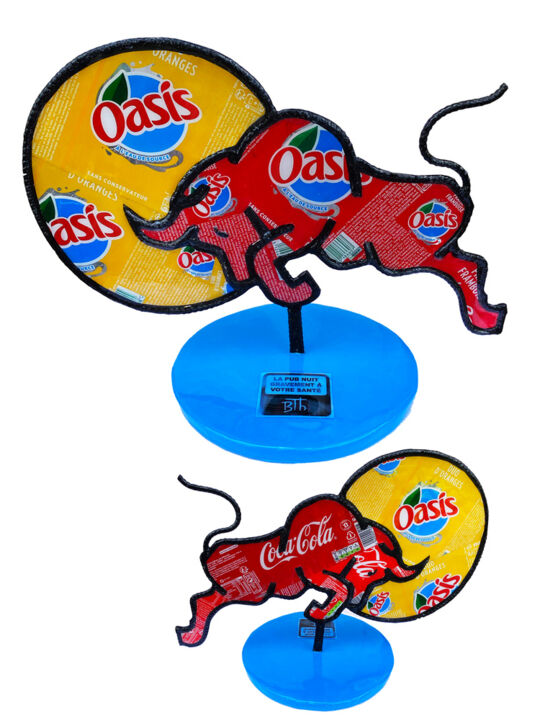
 Olimpia Gaia Martinelli
Olimpia Gaia Martinelli
